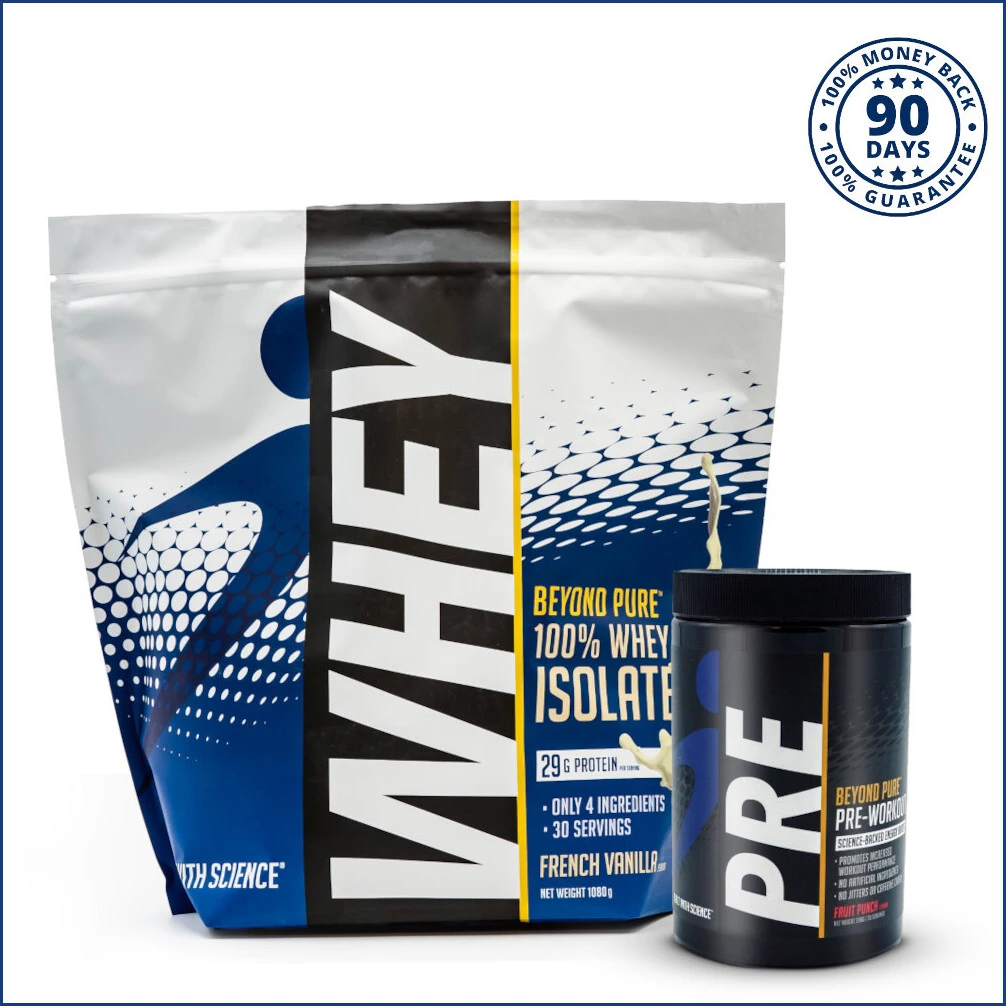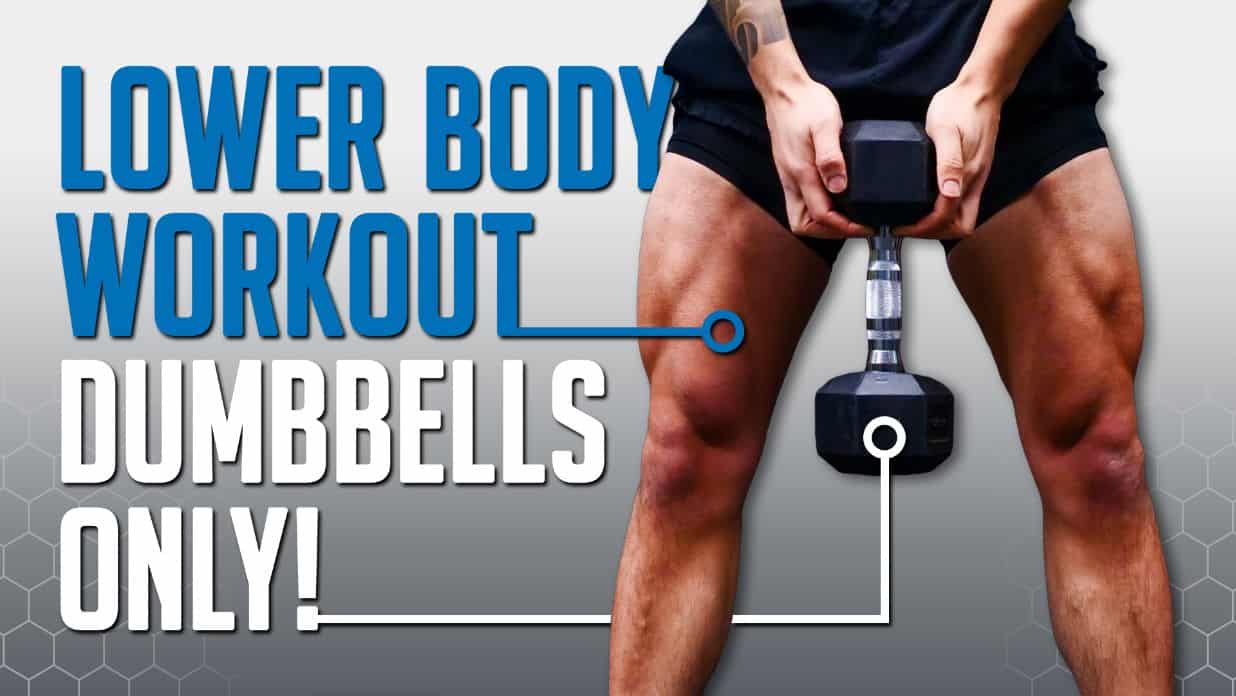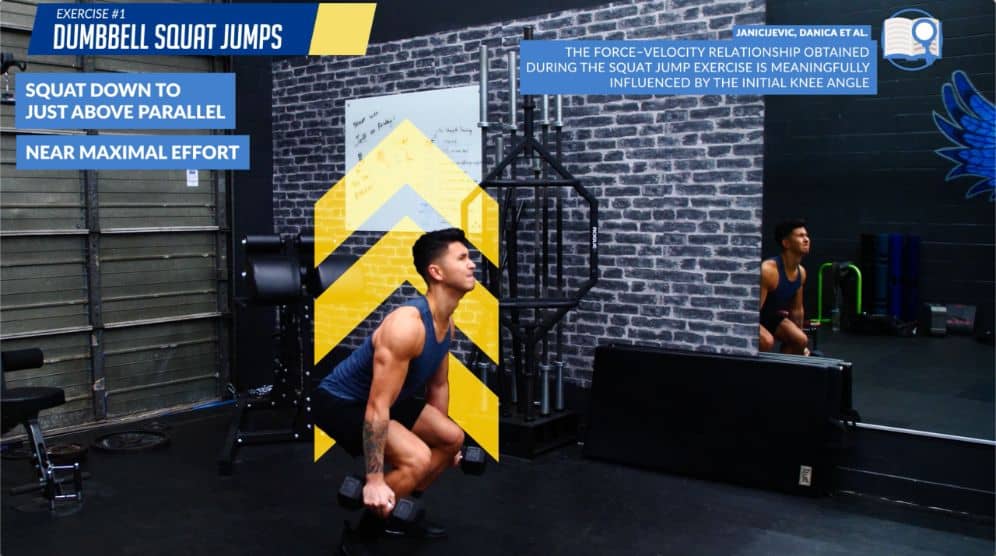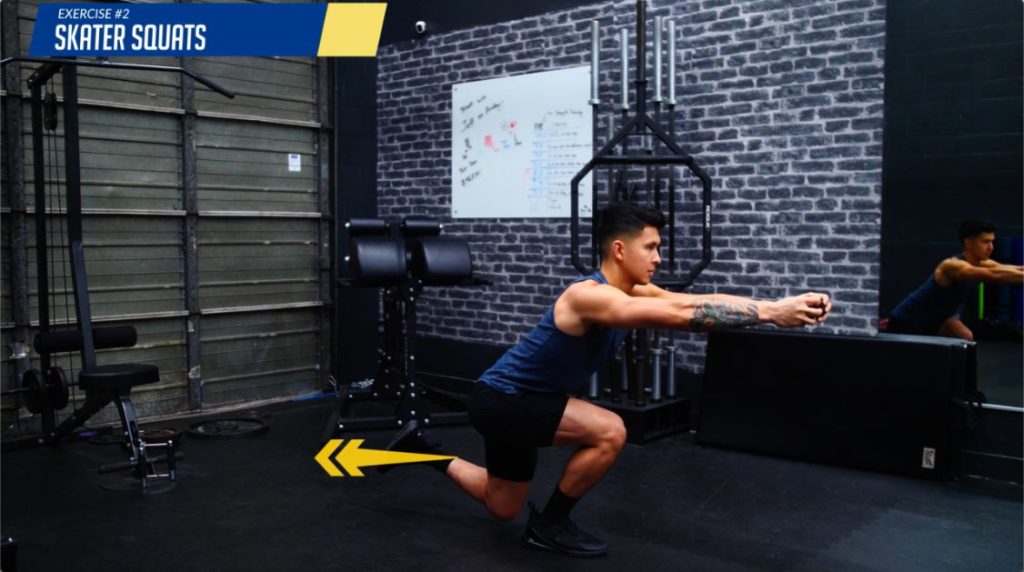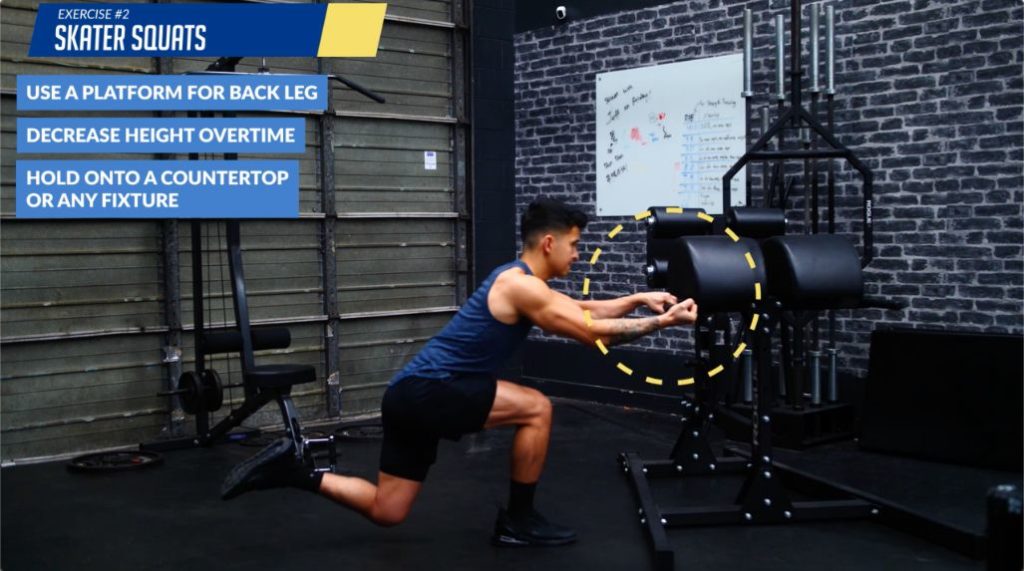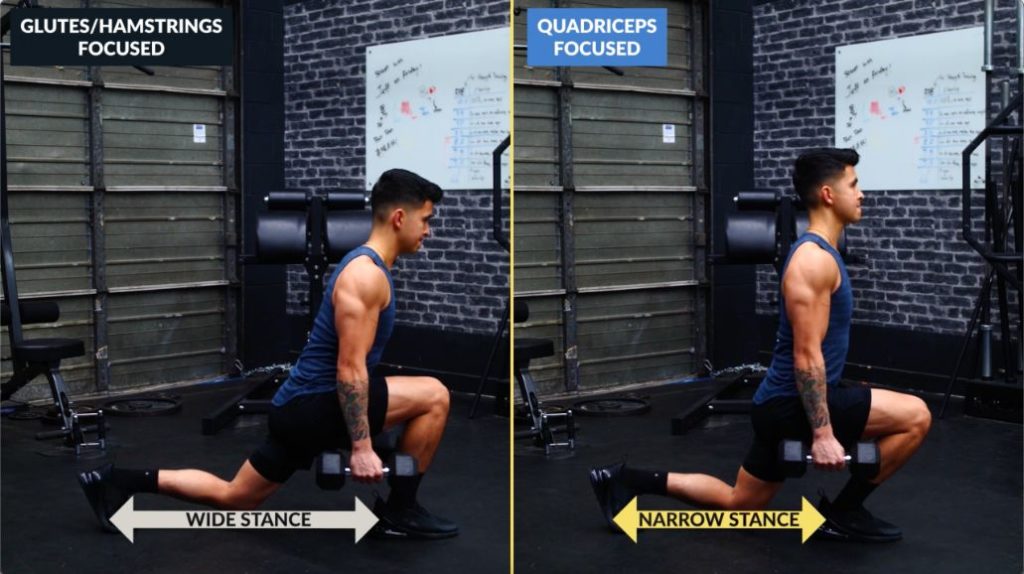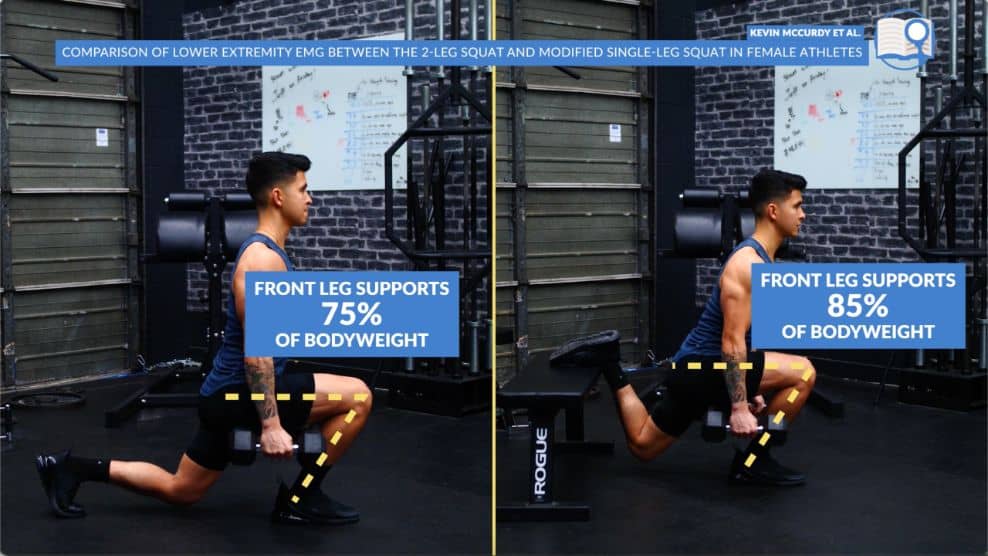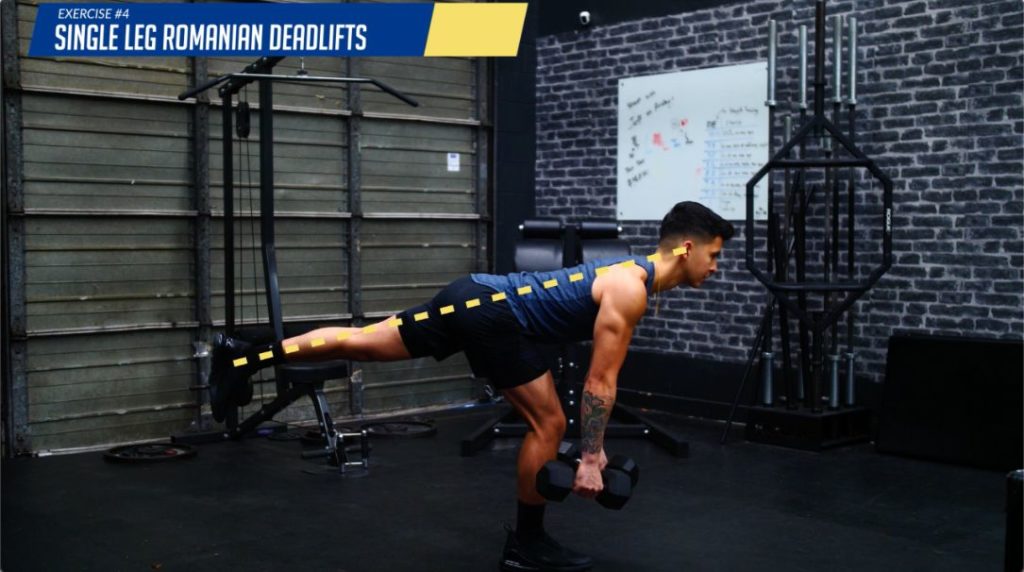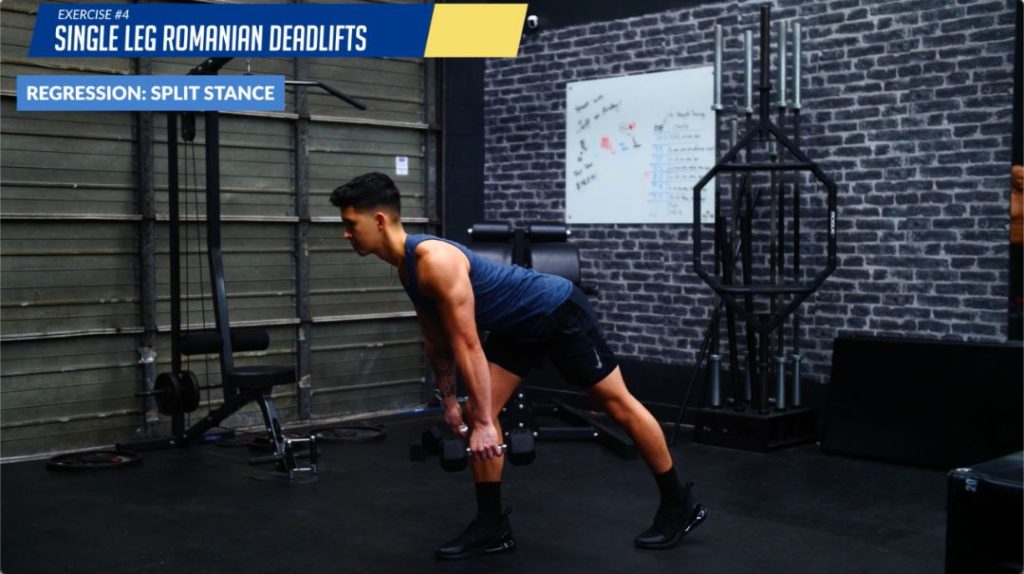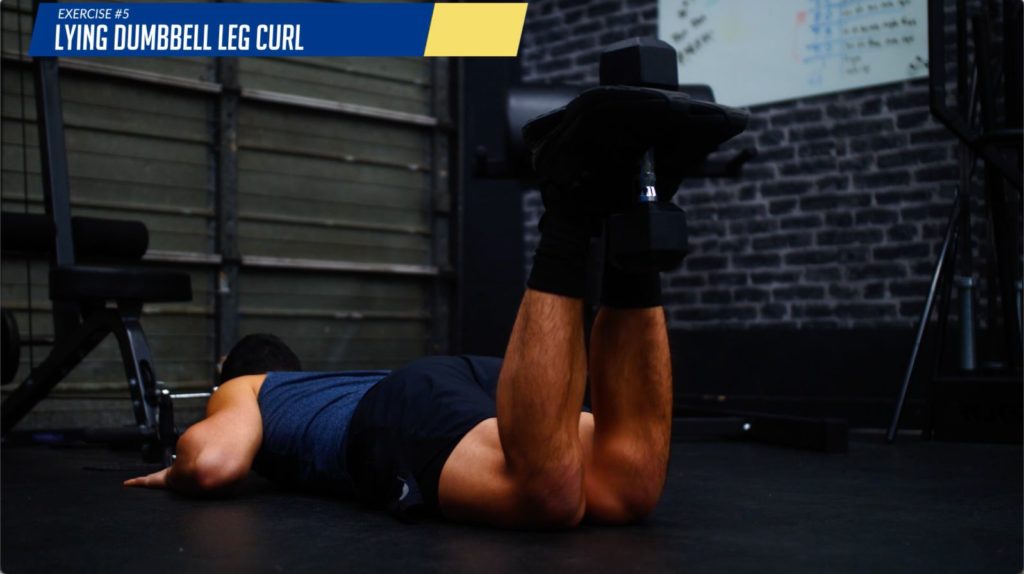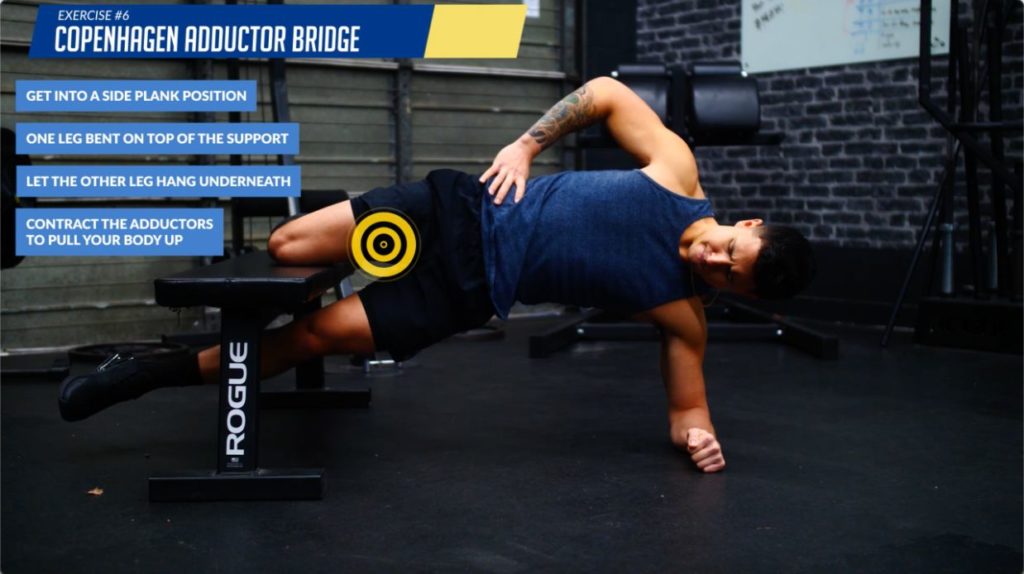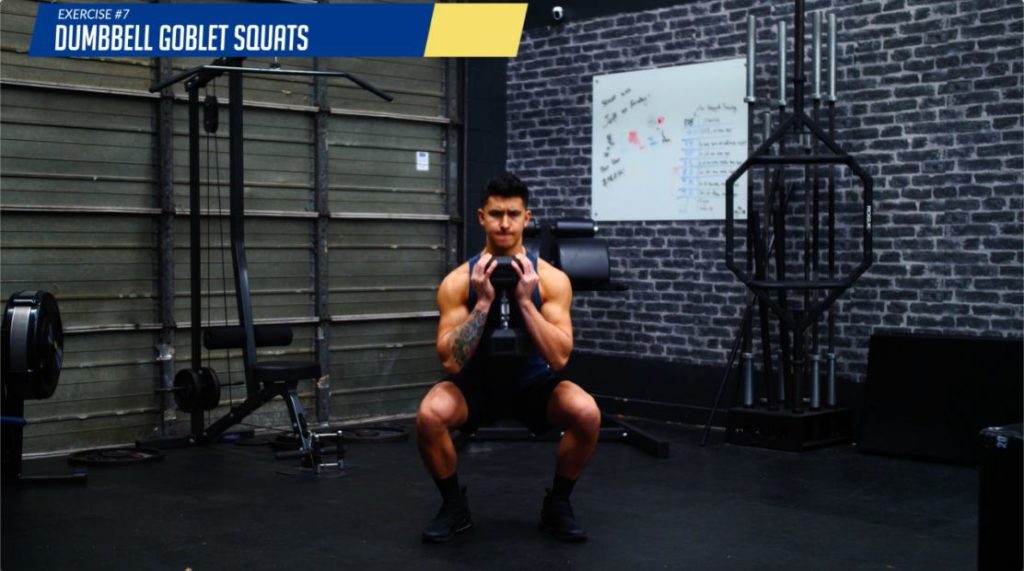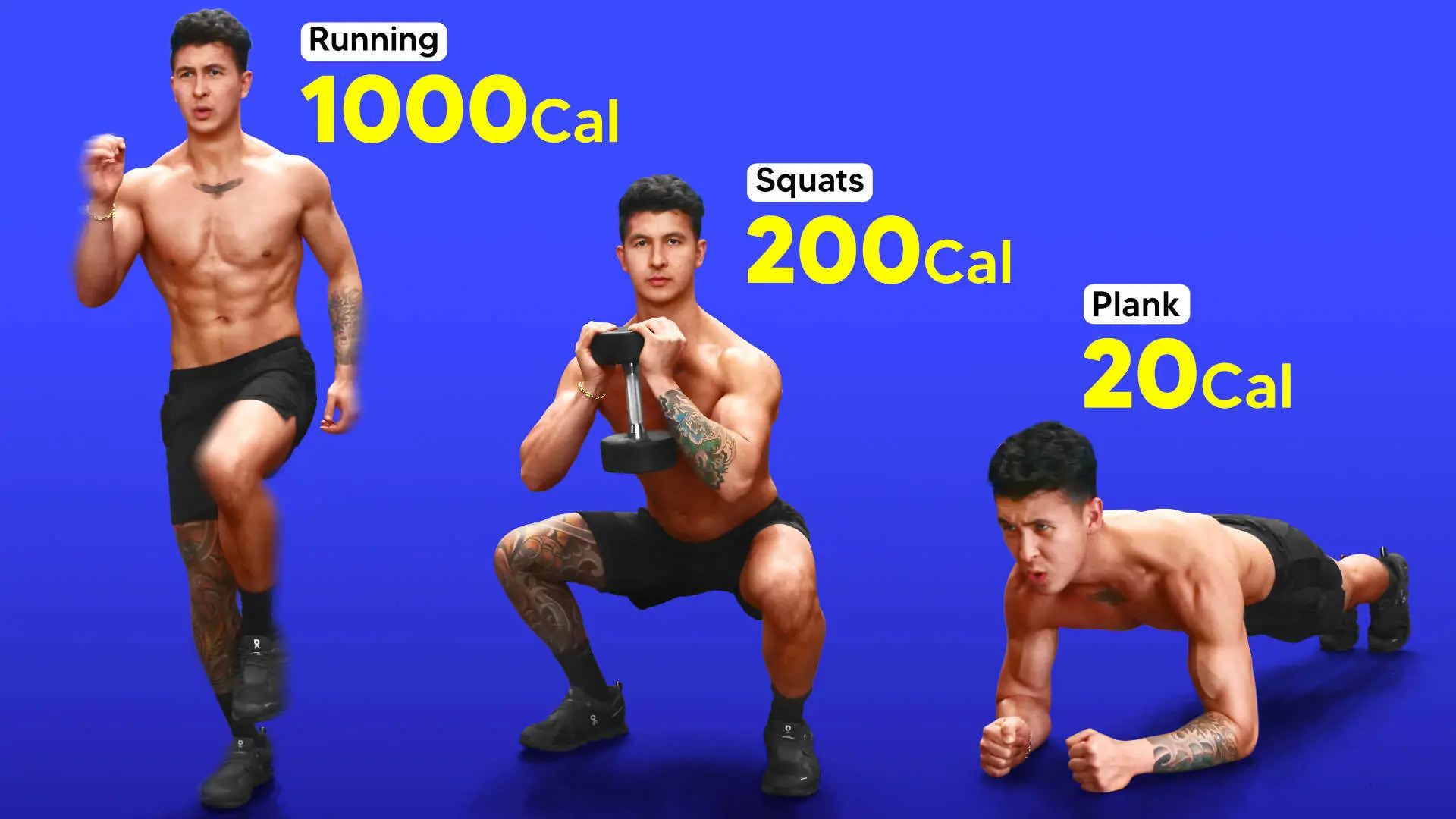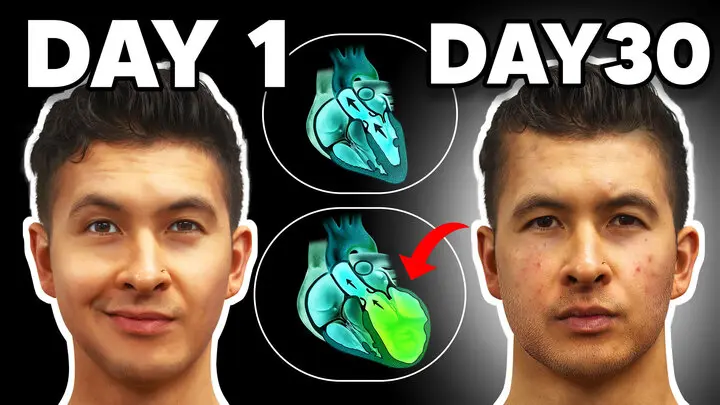The Ultimate Lower Body Workout (All You Need Are Dumbbells)
Don't have access to a barbell or leg press machine? You still can work every major muscle in the legs! In this article, I'll show you the ultimate lower body workout you can do with just dumbbells.
I'll be very honest. Nothing really feels like an accomplishment quite like doing some heavy deadlifts or some back squats. However, sometimes, it’s nice to change things up. And there are times where we may even have to, depending on our circumstances and equipment availability. Thankfully, we don’t need a barbell or leg press machine to adequately work and strengthen every major muscle in the legs. That is - as long as you know what you’re doing. Today, I’ll show you the best lower body workout you can do with the use of a few dumbbells. And, of course, a little bit of science.
But, before we go through the exercises, we first need to talk about rep ranges. This is especially important for those who have access to only a few lighter dumbbell sizes. Why? Well, because you will most likely not have enough weight to mimic the same amount of load you would normally have. To compensate for this, instead of using our typical moderate rep ranges, we’ll instead use:
- Higher reps for most of our sets AND
- Focus on simply taking each of our sets close enough to failure s
... So that our leg muscles are sufficiently activated despite using lighter weight. This is what’s most important for muscle growth. And is why several papers have now shown that we can get comparable results by using lighter weights for higher reps as we would doing fewer reps with heavier weight. As long as we’re pushing close enough. Or all the way to failure during our sets. So, keep that in mind as we go through the following exercises.
But of course, if you’re not just looking to develop your legs, then you’d benefit from one of our programs. These go through, step-by-step, how you can develop a well-rounded physique - no matter if you're training from home or in the gym. If you’re interested:
Click the button below to take my analysis quiz to discover the best program for you:
↓
Exercise 1: Dumbbell Squat Jumps
First, we’ll start with dumbbell squat jumps. Hold the weights either by your sides or at your chest. This will help:
- Work most of our lower body muscles like the quads and glutes
- Improve our athleticism
- Better prepare our lower body muscles and nervous system for the rest of the lower body workout
One study that implemented this exercise with a group of athletes showed an improvement in maximal strength, vertical jump, and sprint performance after 8 weeks.
And the fact that we may only have lighter dumbbells works perfectly for this movement. Since our goal here is power production, we aren’t going to use very heavy weights. And we aren’t going to do a ton of reps. But, we do want to focus on proficiency with every rep to maximize force. And to do so, research suggests to squat down to just above parallel instead of all the way down. And then explode on the way up with near maximal effort.
You'll do this for a total of just 6 reps for 4 or 5 sets. Perform these reps consecutively but move smoothly. This means a proper landing followed by a controlled descent into your next squat. This is also the one exercise on this lower body workout list where you should not train to failure.
Exercise 2: Skater Squats
Next, we’re going to move onto the hardest strength movement of this workout. And it's none other than the skater squat. To perform this movement, you drop your back leg back and then squat back up using your front leg. It’s almost like a reverse lunge. Except, your back foot never hits the ground. Holding a light dumbbell out in front of you will help even out your weight to make balancing easier.
Now the key difference between this exercise and other single-leg squat variations or the back squat is that the:
- Hips - Travel further backwards
- Torso - Inclines further forwards
Which research has shown results in significantly greater activation of the hamstrings and the glutes when compared to the traditional back squat or other single leg variations.
Now even with just your body weight, this is quite a difficult movement. So what I’d recommend is to reduce the range of motion. You can do so by placing blocks, a stack of books, cushions, or any platform for your back knee to touch on the descent. Then over time, gradually decrease the height of the platform until you can lower your back knee to the floor. Another option is to hold onto a countertop or any fixture to help out with your balance and support during the movement.
Exercise 3: Quad-Dominant Lunge Variation
Next, we’re going to move onto a quad-dominant lunge variation in this leg workout you could do at home with just dumbbells. This movement will allow us to continue focusing on one leg at a time. And yet, with less of a strength demand than our previous exercise.
Option 1 (Easier) - Split Squats
Now, the easiest lunge variation out there is split squats. These are basically lunges but without alternating legs. One study which compared split squats to lunges found that non-resistance trained men completed split squats with a much greater range of motion compared to lunges. This is because they were better able to balance - making it a great choice for those new to training. For these, you set your stance and then simply drop your back knee towards the floor. Then, push back up with the front leg. Continue until you finish your set on that side before switching to the other leg.
This exercise will hit your quads, hamstrings, and glutes. But given that the skater squats we performed prior to this already did a great job of emphasizing our hamstrings and glutes, we want to make this exercise more quads-focused. Research has shown that we can do just that by:
- Narrowing our stance during our setup AND
- Maintaining an upright torso so that your front knee can travel forward more
This will as a result shift more tension away from the hamstrings and glutes, and onto the quads instead.
Option 2 (Harder) - Bulgarian Split Squats
Think you need a tougher movement? Or only have access to lighter dumbbells and weights for your lower body workout routine at home? Then simply perform what’s known as a Bulgarian Split Squat. This is where you elevate your rear foot to place an even greater load on your forward leg. When comparing various studies, it’s estimated that during a:
- Traditional lunge - The forward leg supports 75% of your body weight WHEREAS
- Bulgarian split squat - The forward leg supports 85% of your body weight
We also see slightly less hamstring activity with the Bulgarian split squat as well. Thus, making it the ideal lunge variation to emphasize your quads with. Especially if you’re limited to lighter weights. And again, just as with the standard split squats, you’ll want to use a narrower stance to shift more of the tension towards the quads.
Knowing how to tweak/replace exercises that suit your training goals is pretty complicated. Thankfully, though, the team here at BWS has the necessary expertise to do just that. Our 3-on-1 coaching program takes the guesswork out of training, nutrition, and even mobility work - so you can focus on what matters: making gains. If you're interested:
Click the button below to find out more about the 3-on-1 coaching program:
↓
Exercise 4: Single-Leg Romanian Deadlifts
Next, we’ll focus on the hamstrings with the single-leg Romanian deadlift. As the name suggests, this is simply a Romanian Deadlift but on a single leg. You’ll want to keep your planted leg relatively straight and simply bend over at the hips while keeping a neutral back.
Now, the single-leg Romanian deadlift has a few benefits over a double leg:
- You’re not going to need as much weight to load the muscles. Again, this is a great movement if you have limited weights for your lower body workout routine.
- Being that you’re on one leg, you’re going to get more activation from stability muscles. And this is particularly true for your medial glutes as they are a primary stabilizer. In fact, in a study speaking about the massive benefits of single-leg squats like the moves we did earlier, it was suggested that a single-leg Romanian deadlift be paired with them to better isolate the hamstrings. This is due to the high activation they experience during this movement.
Here's what the study had to say:
“With the SLS being performed unilaterally, it would seem prudent that the single-leg Romanian deadlift be suggested as an exercise to both target the hamstrings and retain the specificity of working on one leg.”
If you find balance a challenge, though, you can start with a regression by using a split stance. Use your back leg to provide a little more stability as you perform the movement.
Exercise 5: Lying Dumbbell Leg Curl
Next, we’re going to perform the lying dumbbell curl. This is to further target the hamstrings but with a knee flexion dominant movement. This is important to do since, as illustrated in a 2015 paper, activation of the upper hamstrings seem to be maximized with hip dominant exercises like the Romanian deadlifts we previously did. Whereas the lower hamstrings seem to be best activated with more knee-dominant exercises like the leg curl. Which makes sense when you think about it. The short head of the biceps femoris, one of our hamstring muscles, crosses over the knee joint. And can, therefore, only be trained through knee flexion.
To perform this movement, you can perform it on the ground or on a bench. Control the weight and extend the downward or eccentric portion of each rep. This is important. Strengthening this portion of the movement has been shown to both enhance athletic performance and prevent hamstring injury.
Exercise 6: Copenhagen Adductor Bridge
Lastly, we’ll use something called an adductor bridge. As the name suggests: this helps to train the inside of our legs - the adductors. Normally, a heavy, full range of motion barbell squat and similar exercises would do the trick to strengthen this region. But since we don’t have that available for us and are likely limited in terms of weights, we’ll want to just ensure that we don’t potentially leave this muscle behind. This is especially important. Studies have shown that strengthening the adductors greatly reduces the chance of groin injuries.
To perform this movement, you’ll need a bench or some form of elevated platform. You’re going to get into a side plank position. Place one leg bent on top of the support and let your other leg hang underneath. Then, simply contract the adductors of your top leg to pull your body up. Take it slow and pause at the top of each rep. You should feel the muscles on the inside of your top leg working as you do so.
Exercise 7: Dumbbell Goblet Squats
Lastly, to finish off the workout with some more volume, we’re going to use dumbbell goblet squats. Usually, we will start with squats due to the ability to use a heavy load. But since we have limited equipment, this actually becomes the “lightest” movement. And a great finisher. Since our legs are already quite pre-fatigued from our previous exercises, we’ll be able to provide greater muscular fatigue to our legs with this exercise even though we’re using relatively lighter weight. Push hard and focus on accumulating volume for these. And feel free to take these sets to failure.
The Full Dumbbell Lower Body Workout
Dumbbell Jump Squats: 4 sets of 6 power reps (~2 min rest between sets)
Skater Squat: 3 sets each leg (~45 second rest between legs)
Quad-Dominant Lunge Variation: 3 sets each leg (~45 seconds rest between legs)
SLRD: 3 sets each leg (~45 seconds rest between legs)
Lying DB Leg Curl: 3 sets of 6-8 slow reps (90 seconds rest between sets)
Copenhagen Adductor Bridge: 2 sets of 6-8 reps (30 seconds rest between legs)
DB Goblet Squat: 1-3 sets to failure
So, putting all the exercises together, here’s what your workout could look like. I haven’t listed reps on many of these movements. As I mentioned earlier, focus more on taking each set close to failure. Whether you reach this with 10 reps or 20 reps depending on your strength and the amount of weight you have handy, as long as you’re pushing hard enough during each set, that’s what matters the most.
Overall, this is a great lower body workout that can hang with any barbell workout. Even if you don’t have a ton of fancy equipment, you can create an effective muscle building workout that also doesn’t overlook important muscle groups. You just need to take the time to carefully select your exercises and properly implement them.
And for a step by step science-based program that shows you step by step, and week after week how to workout and how to eat to get the best results regardless of what equipment you may or may not have, then:
Click the button below to take my analysis quiz to discover the best program for you:
↓
Anyways that’s it for today guys! I hope you all enjoyed it! Don’t forget to give me a follow and connect with me on Instagram, Facebook, and Youtube as well, in order to stay up to date with my content.



